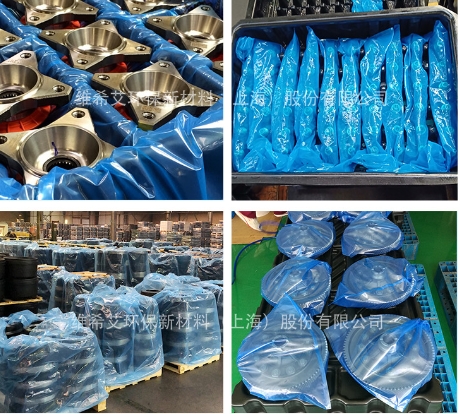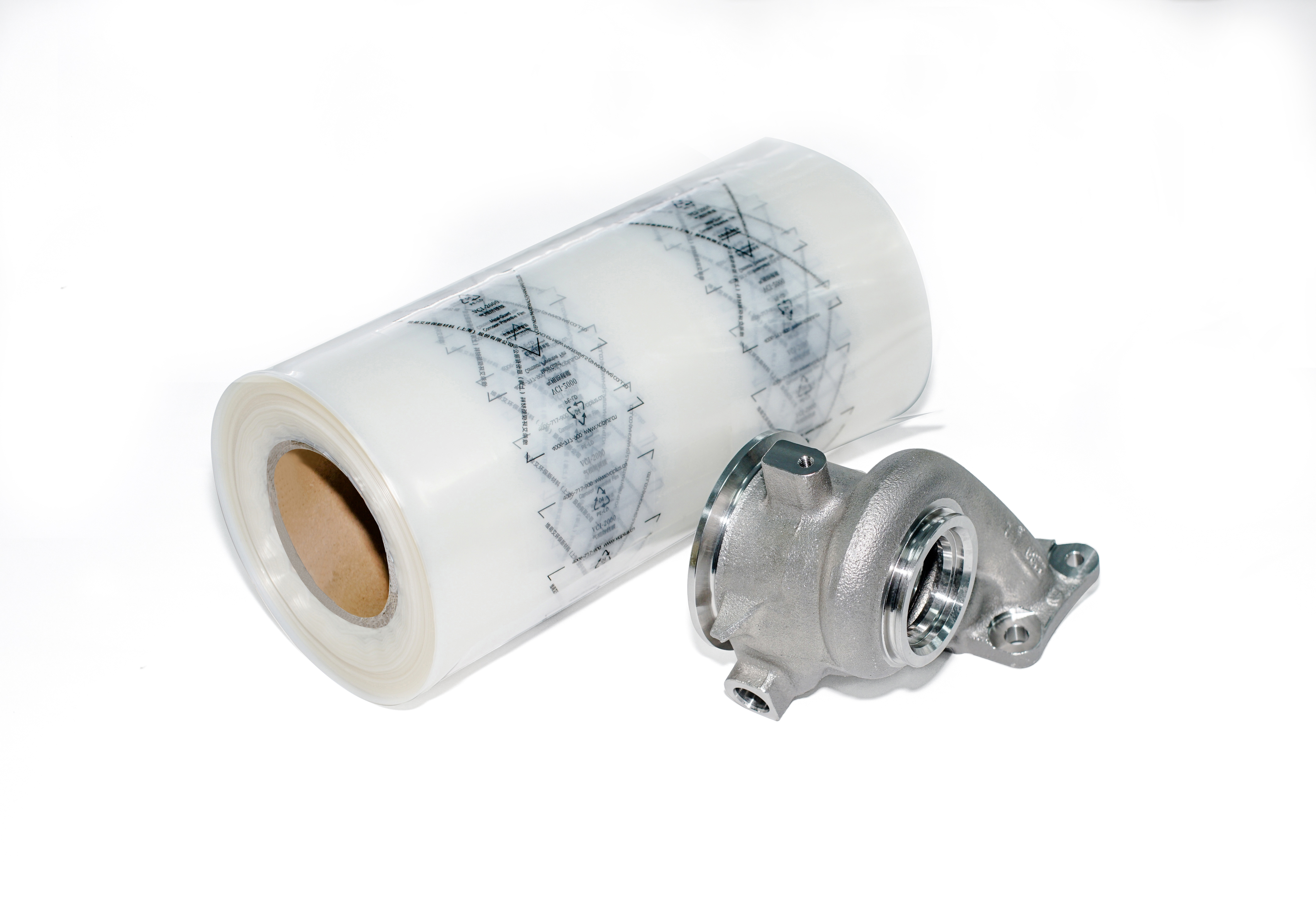Views: 0 Author: Site Editor Publish Time: 2025-06-04 Origin: Site





In an era where sustainability and circular economy principles dominate industry discourse, packaging solutions must evolve to meet environmental imperatives. Traditional grease-based rust prevention techniques—long the industry standard—are increasingly viewed as relics of a less eco-conscious age. Enter Vapor Corrosion Inhibitor (VCI) films: innovative polymer laminates infused with corrosion inhibitors that protect metal surfaces without messy residues, hazardous chemicals, or sacrificial coatings. By transitioning from grease to VCI film, manufacturers not only streamline production and logistics but also align with global goals for waste reduction, carbon neutrality, and resource conservation.
Each year, millions of tonnes of metal packaging end up in landfills or require energy-intensive recycling processes. In the European Union alone, metal packaging waste reached 4.1 million tonnes in 2022, marking a 7.3% increase since 2011. Across the Atlantic, U.S. municipal solid waste data show that steel containers and packaging generated 2.2 million tonnes in 2018—amounting to nearly 1% of total MSW—with a recovery rate of just 73.8%. These figures underscore the scale of the challenge: conventional metal packaging, though recyclable, still imposes significant environmental burdens through collection, sorting, and processing.

As consumer awareness and regulatory pressures mount, companies must embed sustainability into every link of their supply chains. The global sustainable packaging market is projected to soar from US $276 billion in 2023 to US $558 billion by 2034—a compound annual growth rate (CAGR) signaling rapid adoption of eco-friendly solutions. Life Cycle Assessment (LCA) frameworks further empower decision-makers to quantify environmental impacts—from raw material extraction to end-of-life disposal—and to compare packaging options on metrics such as greenhouse gas emissions, water usage, and energy consumption. In this context, VCI film emerges as a frontrunner, offering leaner resource profiles and waste streams.
Traditional rust prevention relies heavily on grease, waxes, and solvent-based coatings. While effective at shielding metal from moisture and oxygen, these methods carry hidden externalities:
Chemical Residues: Grease and solvent coatings often leave oily films that must be removed before further processing, generating contaminated wash waters and sludge.
Soil and Water Pollution: Improper disposal of spent rust-inhibiting oils can lead to hydrocarbon runoff, threatening aquatic ecosystems and soil health.
Regulatory Burdens: Hazardous waste classification for used oils triggers costly handling, transport, and disposal requirements under international conventions and local mandates.
These environmental and compliance costs translate directly into higher operational expenditures and reputational risks for manufacturers.
VCI films are engineered to minimize environmental impacts at every stage:
Recyclable Materials: Most VCI films are based on polyethylene or polypropylene substrates that can enter existing film recycling streams without contaminating them.
Oil-Free, No-Clean Formulation: By embedding corrosion inhibitors directly into the polymer matrix—often via micronized organic compounds—VCI films eliminate the need for post-process cleaning and the associated solvent or water use.
Renewable Feedstocks: Advanced grades incorporate bio-based polymers or additives derived from plant oils, reducing reliance on virgin petrochemicals and lowering cradle-to-gate carbon footprints.
This conscious material selection positions VCI films as part of the solution to plastic pollution rather than its cause.

Although polymer film manufacturing is inherently energy-intensive, VCI film processes can be optimized:
Co-Extrusion Efficiency: Multi-layer co-extrusion lines allow simultaneous layering of barrier, structural, and inhibitor-bearing layers, reducing throughput times and energy per kilogram of output .
Water-Based Inhibitor Systems: Replacing solvent carriers with aqueous emulsions cuts VOC emissions and lowers thermal energy demands for drying .
On-Site Renewable Energy: Leading manufacturers increasingly deploy solar arrays or biogas CHP systems to power extrusion and converting lines, shrinking Scope 2 emissions.
When benchmarked against legacy oil-based coating facilities, VCI film lines often demonstrate 15–25% lower total energy use per unit of corrosion protection delivered.
A comprehensive LCA compares all relevant stages—from raw material extraction to end-of-life management:
Raw Materials: Traditional greases require mineral oil extraction and refining, whereas VCI films use polymer and additive feedstocks with lower direct GHG emissions per ton produced .
Production: Solvent-based coatings often need solvent recovery systems; VCI films’ integrated approach sidesteps this, reducing on-site emissions and waste.
Use Phase: VCI films provide continuous, passive protection for months without reapplication, unlike greases that may degrade or require topping up.
End-of-Life: With robust recycling infrastructure for polyolefin films, used VCI wraps can re-enter the circular economy, whereas contaminated greases typically go straight to incineration or landfill.
Taken together, LCAs consistently rate VCI films as having 30–40% lower cradle-to-grave carbon footprints than grease-based alternatives in equivalent corrosion protection roles.
To validate green claims, VCI film providers pursue recognized eco-labels and compliance marks:
ISO 9001 & ISO 14001: Quality and environmental management systems ensure consistent product performance and continuous improvement
REACH & RoHS Compliance: Inhibitor chemistries are vetted to exclude restricted substances, safeguarding human health and simplifying cross-border shipments
Third-Party LCA Verification: Peer-reviewed LCA studies, accredited by bodies like UL Environment, lend credibility to carbon-reduction claims
These certifications not only mitigate regulatory risks but also unlock procurement opportunities with sustainability-minded OEMs.
Transitioning to VCI films requires coordinated efforts across multiple stakeholders:
Engaging Customers: Demonstrating total cost of ownership (TCO) savings—fewer wash cycles, reduced labor, and avoided transit damage—helps secure buy-in with procurement teams
Collaborating with Recyclers: Establishing take-back or closed-loop programs ensures used films are collected and reprocessed rather than landfilled
Regulatory Partnerships: Working alongside environmental agencies to pilot advanced recycling and bio-additive trials accelerates policy alignment and infrastructure development
Industry Alliances: Joining forums such as the Plastic Sustainability Coalition or Metal Industry Green Packaging Council amplifies best practices and drives collective impact
By embedding VCI films into broader circularity initiatives, companies can demonstrate leadership and share learnings across sectors.
Embracing VCI film isn’t just a matter of upgrading your rust prevention strategy—it’s an investment in a cleaner, more efficient, and future-ready supply chain. At VCI EP NEW MATERIALS (SHANGHAI) CO., LTD., we combine decades of expertise with cutting-edge polymer science to deliver eco-designed, residue-free corrosion protection solutions that help you meet sustainability targets, streamline operations, and reduce total cost of ownership.
Discover how our VCI films can replace messy greases and solvent-based coatings across industries—from automotive and heavy machinery to medical devices and renewable energy. Visit us at www.vcipluspacking.com to explore detailed product specifications, third-party certification reports, and real-world case studies. If you’re ready to transition to greener packaging without compromising performance, our technical team is here to provide customized consultations, on-site trials, and fast, reliable support.
Connect with VCI EP today and take the next step toward sustainable rust prevention that protects both your assets and the planet.
